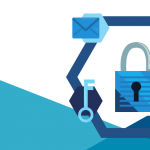Millions all over the planet endure strokes consistently, and millions more are in recuperation from one they’ve endured. Recapturing the utilization of impacted appendages and capacities is a difficult experience, yet one that can be abbreviated by escalated restoration endeavors — which Neurofenix has shown can occur in the home as opposed to during successive outings to the medical clinic. Its Neuroball gadget and home treatment stage have prompted $7 million in new financing to extend and develop its foundation.
The issue with existing stroke restoration strategies isn’t that they aren’t compelling, yet that they’re for the most part situated in clinics and accordingly limit how frequently they can be locked in with.
“For the vast majority, numerous years recovery, particularly brain restoration, has been centered around large massive gear in offices,” made sense of Guillem Singla, CEO and fellow benefactor (with CTO Dimitrios Athanasiou) of Neurofenix. “We’ve extricated the quintessence of what should be finished in brain restoration: It must be escalated, drawing in, rousing and get individuals to follow up for weeks as well as long stretches of time.”
Also Read: How SanKash Eased The Burden Of Dream Vacations For Indian Travellers?
There are some home recovery gadgets out there, frequently as gloves or free movement following, the two of which work to a degree however haven’t gotten on.
“Before beginning to foster the main items, we chatted with many patients, many specialists, tried everything out — I for one, when a relative suffered a heart attack, needed to attempt numerous things,” Singla said. “The main earnest need that was by and large totally disregarded was upper appendage restoration: 80% of patients experience the ill effects of arm and hand disability after a stroke.”
The organization’s answer (“after around 50 cycles,” he added) is the Neuroball, a gadget that the client can hold and tie into effectively and which tracks each development of the upper appendages from shoulder down to fingertips. It does nothing profoundly unique in relation to in-emergency clinic arrangements yet rather permits patients to play out the rehabilitative activities and developments undeniably more habitually, and in a way that mirrors their specific necessities and capacities.
It incorporates a movement and direction sensor for wrist, elbow and shoulder developments, and individual sensors for each finger. The ball rests in a support yet can be gotten and moved uninhibitedly.
“The key is brain adaptability,” said Singla. “The proof shows that the more redundancies a patient does, shows recuperation positively. In a run of the mill meeting a patient does somewhere in the range of 30 and 40 developments with a specialist, and in our clinical preliminaries we showed that patients accomplished more than 600 every day.”
Convenience, gamification and a touch of algorithmic change are what the organization claims bring about this gigantic expansion in practice — and, as per concentrates on they’ve led, improved results, including further developed scope of development and diminished torment.
It’s more straightforward to put on than a resistive glove, doesn’t occupy a ton of room, runs its product on a little, committed tablet and has a small bunch of various games accessible for every development the patient requirements to perform. These are basic yet inspirational things, similar to a perpetual racer where you crush to hop or a Space Invaders game where you pivot your wrist to move your boat. It probably could be Fortnite, however it’s worse than simply seeing a number go up. There are even lists of competitors on the off chance that a client wants to contrast their advancement and an individual patient.
The commitment of further developed home restoration is one that will more than likely enticement for a many individuals for whom going to the emergency clinic or exercise based recuperation office three or four times each week is unrealistic. Such a timetable would be pursuing for anybody, not to mention an individual who could have portability, discourse or upper appendage constraints.
Doing the activities at home and individually, with the product acclimating to patients’ own rhythms and inclinations, (for example, being more adaptable in the first part of the day or night) drives normally to undeniably more rehabilitative work being managed without extra clinical assets. (“Truth be told, last week a patient arrived at 300 days straight on our foundation,” noted Singla.)
The fundamental boundary is reasonableness: The gadget is too new to possibly be covered by protection, however it meets all requirements for HSA and FSA spending. Up until this point the organization, situated in the U.K. (what’s more, Atlanta in the U.S.), has led a small bunch of tests showing the Neuroball’s viability yet not the sort required to be covered as a recommended clinical gadget. In any case, that is next on the plan since they have a new $7 million round in the bank.
“Series A was raised because we had clear objectives as a main priority,” Singla said, fundamentally laying out its business and clinical presence in the U.S. and afterward extending to neighboring types of treatment.
“We want to be the head of brain restoration at home, for stroke as well as for injury,” he proceeded. “In a real sense have 400 thoughts in our overabundance of enhancements we can make: extensions, mental preparation, discourse and language … on the off chance that you contemplate the requirements of a neurological patient, they are very differed. There’s so many different treatments we can check out.”
The $7 million A round was driven by AlbionVC, with support by HTH, InHealth Ventures and existing financial backers. The gadget isn’t comprehensively accessible yet, however inquisitive clinicians and planned patients are urged to reach out for likely joint effort.

















